Why a ShoulderCam Should Be Heavy
The best handheld sound camera I ever used was the Panavision Platinum camera. With a lens, lightweight 400’ mag, Preston MDR, focus motors, Mattebox and on-board monitor, the camera weighed in at about 45 lbs. The best handheld camera for action that I have ever used was the Arri 235. With a lens, 400’ dolphin mag, Preston MDR, focus motors, Mattebox and on-board monitor, it weighs in at 26 lbs. So why would you want your RED Epic, Canon C500, C300, 1DC, 5D, F3, BMCC, FS-100, etc. to weigh any less? This is called stabilization. Lets talk about building up your shoulder cam rig.
“Make It Weigh a Ton”
Operating with some girth on your shoulders gives you control. Having a shoulder cam rig that fits and conforms to your body is paramount. You need it to feel like it is attached to you as well as being perfectly balanced. When Letus and I set out to design the MCS 2.0 ShoulderCam, we took the Arri 235 and made it our benchmark. The long weight in the back of our rig weighs the same as the 400’ dolphin mag. The camera sits over the center of your shoulder, not far forward.
The shoulder pad is a wedge design because your shoulder is not flat. It trails away at an angle so the pad is shaped in a way to roll the camera to your eye. It is one inch that tappers to a half inch, with very comfortable leather and memory foam pads that can be replaced if they go bad.
This has velcro stitched into it, which then can affix to the Revolutionary V-Lock baseplate.

Film cameras sit right on the center of your shoulder, perfectly balanced, not way out in front.
The MCS system does exactly that. Pans and tilts are more controlled and rolling shutter minimized. The EVF opened up all of this innovation. It took all of the cameras that look like still cameras or black boxes and made them into something that looks and feels like a film camera.
Grabbing Ahold of Something
I love handheld in many ways. It simply puts you there. You are present; you feel immersed. As an operator, it gives you a great amount of freedom so that you can react with the actors and not worry about 2 to 3 other people, like a dolly grip or a crane grip, having to be in sync.
When I operate handheld with a Panavision Platinum, I grab ahold of the MatteBox.
We noticed two things very quickly. Our MatteBox is very sturdy, and you can grab ahold of it and operate if you have it mounted to the rods.
To keep your conversion time down, I would advise you to use our clamp-on MatteBox set up with the T-Handles so that it will not spin on you. The reason for the clamp-on is that when you click out of the V-lock baseplate to convert to another rig, you are taking everything with you. Nothing will be left other than the rods and baseplate, which would be desirable if you wanted to strip it down into ActionCam or ManCam.
“Time is Money”
Converting from handheld to sticks literally takes 15 seconds by ripping off the shoulder pad where the Baseplate already has a mini touch and go built into it. This baby just clicks right in to your head, and all you do is remove the handles, pull the back long weight off, and add the Anton Bauer gold plate weight to counter balance your fluid head.
“A Rock Solid Rig”
Have you ever been frustrated with spinning handles and never getting them to be rock solid? Well, what Letus and I did was to square off the rods so that they could not possibly spin. We made them T shaped so that you can fly them up high like you were grabbing a Mattebox or down low to feel more like a traditional handheld rig. It will work for you no matter what your preference might be.
“How I Use Shoulder Based Camera Systems”
What I love so much about handheld is the ability to tell a story from point A to B to C to D without cuts. Panning around and moving with the scene’s blocking is so important in telling stories that demand that feel and intensity.
“The Power of the V-Lock”
What this base plate and shoulder pad system does is enable you to convert quickly from one shooting configuration to another effortlessly, which saves time, adds shots and gives you the ability to put it up on the screen. This is the whole reason behind the MCS 2.0 system. Saving time saves money, which in turn expands your vision.
There are plenty of manufacturers that are taking these small plastic boxes and turning them into an Alexa sized camera system with all the SDI outputs, XLR inputs, power ports, etc. We want it to be an Alexa when it can be, but we also want it to be small and nimble like a DSLR, so that it can get into unique places, with all the necessary support to make a movie, not just how it came out of the bubble wrap. It still needs to function, needs follow focus, on-board monitors, MDR’s, etc.
Having a camera system that can be as big or as small as you like is the power of the platform and why we built it. If you look at other manufacturer price points, they spend 1/20th on the rig, compared to the selling price. We spend half of what it costs to make it. It seems pretty simple.
For rental inquiries go to www.revolutioncinemarentals.com





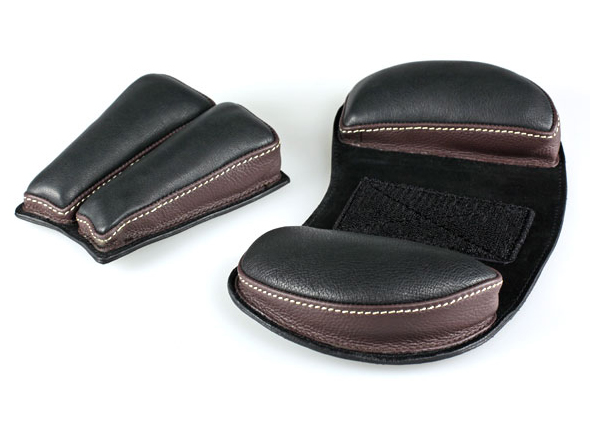


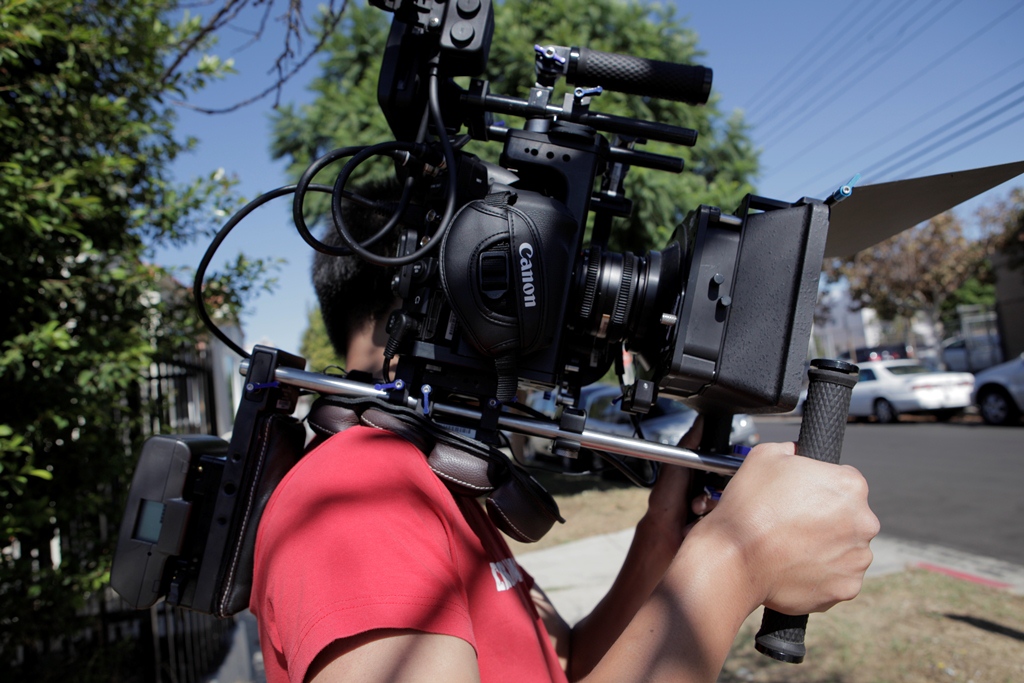


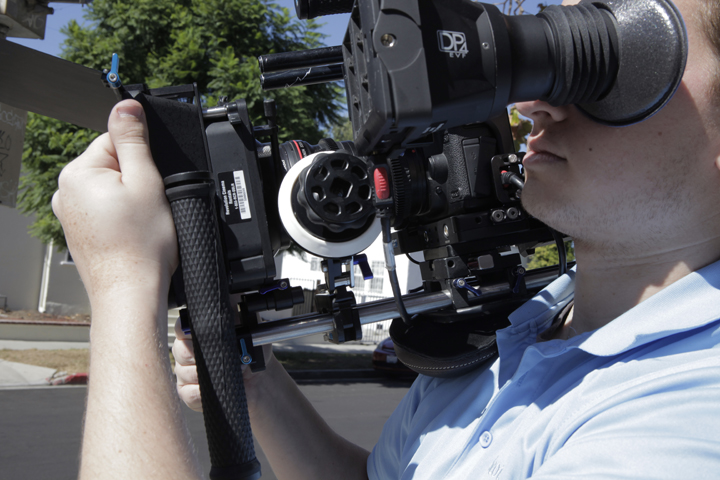

















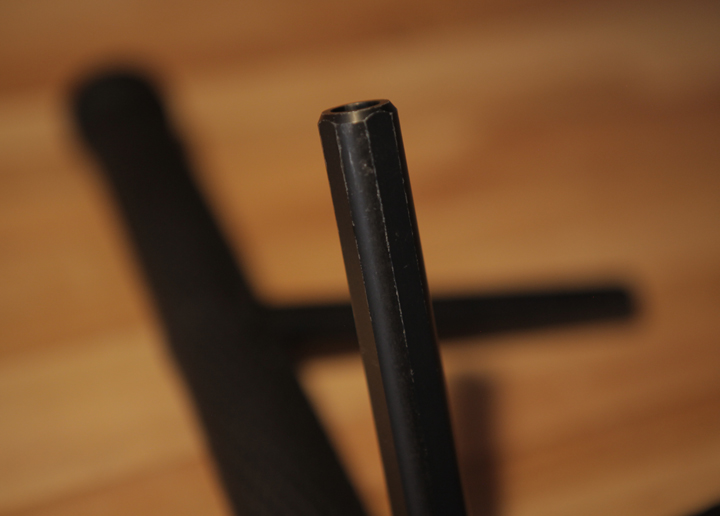
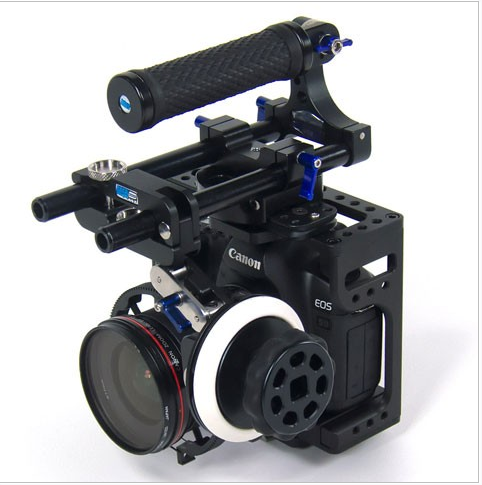
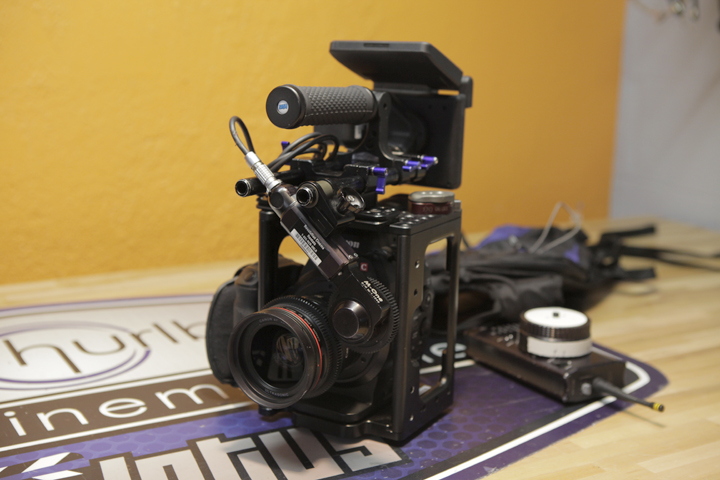
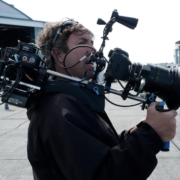







Noce tools, Shane!
Francesco Sandonà, thank you for your support
Shane,
Great post as usual!
I’m shooting a feature with epic and scarlet with a fair amount of handheld work. We’re using lightweight Angenieux zooms and probably ultra primes as well. Any special considerations when using the MCS with this configuration? Extra weights, rod length, center of gravity, etc.
Thanks so much!
Dan Rubottom, thank you so much for your kind words. The extra rod length will be required. We use 24″ rods with the long weight set back a bit, depending on how heavy your zoom is I double stack two long weights together. Call Freddie at revolutioncinemarentals.com. They will hook you up. It is my goto house
Dan Rubottom, there are many accessories that I have put in the MCS 2.0 to help you with that, there is added weights, lens supports, extra rod length. We had stainless up to 40″. All there just need to navigate a bit. If you would like personal help. Please call my assistant Derek and he will help you with what you will need. (480) 307-3354 or derekj@hurlbutvisuals.com
Shane, informative great info.
My question is what is your take on shoulder cam, versus a steadycam with controlled arm vest, mobile like shoulder rig, but at the same time im told that it gives controlled dolly mobile like movements.
Jay slocum, too different types of storytelling. I use handheld to intensify the action, put you on edge, steadicam is there to be more smooth.
Thanks Shane , Your an Inspiration !
Manoj Narula, thank you for those wonderful words
Manoj Narula, you are so welcome
I think one of the biggest benefits too of the heavier rig is eliminating the micro movements that seem for me to cause more rolling shutter.
J. Nathan Evans, that is exactly why I do it. Poor on the pounds, smooth that is why their was hardly any rolling shutter in Act of Valor. My camera weighed 15-25lbs at all times.
J. Nathan Evans, that is exactly right. This is why there is hardly any rolling shutter on Act of Valor because my camera weighed in a 15-25lbs always.
J. Nathan Evans, I could not have said it any better. When people pick up my rig, that is the first thing they say, this thing is damn heavy. Act of Valor was shot with a dslr and they camera weighed about 20 pounds, no rolling shutter.
I failed Advanced level Physics as an 18 year old but from what I can remember, if the camera has weight to it it has resistance to movement (inertia?) hence it will shake, rattle and roll less.
My Sony DSR-570 WSPL ENG camera weights about 20 pounds and sits comfortably on the shoulder. I once had to stand outside a court house for a whole hour with the camera on my shoulder…… sounds easy? Give it a try.
In general the people who moan about cameras and tripods being too heavy are not the people are using them day in and day out.
Colin Ashby, absolutely, well said from a Physics point of view. Science doesn’t lie. Don’t think about protecting yourself or your shoulder, think about what is going to tell the best story.
Having said that, I did have a trapped nerve in my shoulder for about 3 years without realising !! I thought it was just wear and tear!
Nothing that six sessions with a physio couldn’t cure though.
@Colin ENG cameras are pretty much perfectly formed! A rig can be incredibly difficult to balance. You don’t have to look around very hard to see rigs pointing down towards 120º rather than a physically comfortable 90º (Arri 235) – I see so many ‘moaners’ compensating for poorly designed rigs that they need to ‘unnaturally position and arch their back and necks. That’s not good for any persons body. Not to get into a whos more of a man, but I’d rather stand all day outside a court house with a DSR570, than stand with a poorly balanced rig any time.
Hi Dave, I think we’re both singing from the same song sheet !
The moaners I referred to are my journalist colleagues who continually complain about the weight of equipment even though they never have to carry it. My fellow cameramen and women never grumble about it but then will quietly mention how many sessions they’ve had with a chiropractor.
As you say ENG cameras are perfectly balanced and it is easily possible to balance the camera on your shoulder no hands.
Colin Ashby, ha ha, I hear you, go to have some weight there.
Colin Ashby, you go to have a little mass there to be stable, that is all there is to it. Thanks for sharing
Must say Shane, I have been reading/recommending your blog for a while. As a 25 year old DP i really find it as my most valuable source of tips. Finding a quality mentor is hard so I like to think you have taken a part in my progression. Im basically obsessed with story telling, working Monday till Friday as DP in Melbourne, then weekends doing non stop free music videos and short films. Any time you come to OZ, please do some kind of class, would be an honour to meet you. Never stop the blog too!
Shaun Herbertson, thank you so much for your wonderful words and support. That is what I did as well, anything to gain experience and learn. I never really had a mentor, so I wanted to do this for all the young cinematographers coming up the ladder. A place where nothing is held close to the vest. Giving back. Love to come to OZ, I have had so many request, got to make this happen.
Thanks Shane, I’ve got a couple of rigs for my C300 and have never been happy. You’ve just shown me the bleeding obvious…I’ve been able to adapt my rig to get the camera on my shoulder and it works great! Thanks for the great advice and keep up the good work!
Dave Young, you are very welcome and thank you for your support
Hi Shane, Just picked up the C300 rig and a couple of the 5d action-cam cages to switch in and out of. I noticed that the c300 cage has a secondary v-clip to latch the rear stabilizer to and the 5d cages do not. My question is, is the back porch required or is the smaller base plate all I need? Love reading your blog by the way. Awesome job as always. -J
John Agcaoili, yes you need the back porch for the 5D. This will stabilize that baby like a rock. Thank you for your kind words.
I’ve custom built a lightweight carbon fibre/aluminium shoulder rig for my MKIII with parts from a number of rig makers, I call it the bird of prey. The rig itself is extremely light but I hang a lens case full of lead off the back so it’s perfectly balanced. The major difference between my rig and every other rig I’ve seen is that my handles are mounted to the 15mm rods in a roughly 20 degrees off horizontal position like mountain bike or chopper handlebars. I find this setup much more stable than the vertical handle position especially for pans. I recently shot a short with this rig that I can’t screen publicly yet, if you wanna see how this rig performs drop me an email and I’ll send you a link.
squig, that sounds very cool BIRD of Prey. Love it. Thanks for sharing. We are making a new version of our handles so that they are rosetted and can do exactly that.
Same is true with Steadicam, more weight = more inertia, thus more stability.
Bob Gilles, could not agree more.
Buying the Shoulder rig for 5dmkIII. Can you recommend a case for the rig good for lots air travel?
Joel Hager, Pelican 1550. Fits in your overhead bin and has wheels
Shane, I love all the great articles you’ve posted on your site. Very educational and inspirational. I’m a film student at the University of North Carolina School of the Arts. Last school year, I had the pleasure of meeting Michael Tronick. He screened Act of Valor at our school and did a Q and A. I was blown away by the action sequences of that film. That’s what led me to your website. Thank you for devoting so much time updating those of us that are hungry for knowledge from groundbreaking professionals like you. My question is, What are MDR’s? I’ve seen you mention them in a few different articles. I’m not familiar with that term. Also, I’m just throwing this out there. It would be awesome if you came to UNCSA and did a DSLR or general cinematography workshop. We’ve got some great professors (Michael Chapman, Tom Ackerman, David Elkins, John Le Blanc) but from reading your blogs I get the sense that you’re a bit more in tune with the latest advances while still remaining grounded in DP/Operating fundamentals, and you seem to have a keen sense where filmmaking is headed.
For shoulder mount rigs, why would one choose stainless steel rods over graphite rods?
Chris, Graphite rods flex huge and add major rolling shutter issues across the board.
Hey Shane,
First off love all the posts you do, thanks for all of it.
I have this rig with a few minor alterations (I replaced the V-lock system with Letus’ tag plate and then put the cheese plate hanging off the back with my battery and counter weights) but its more or less the same and comes in at 25-28lbs, and just last week finally had a chance to take it out into the field.
The whole time I was shooting it just never felt comfortable and I feel like it is the shoulder pads fault, it seamed to “deflate” quickly and then my shoulder was just pressed up against metal, also I was constantly fighting against its tendency to roll away from me and the other discomfort I was having was the camera being so close to my head that I was constantly tilting my head away from it. I’ve tried adjusting about all I can think of but nothing ever seamed to make it gel well.
I did appreciate the balance of it all, and the fact that I could take my hands of the camera and it could just balance on my shoulder was great but I just suffered a lot of shoulder discomfort in the process,
Do you have any resources on shoulder rig ergonomics?
Thanks Again,
Well, this post dates from 2012. I did not know you until I looked an effective solution for dslr.
Now I have a GH4 and a Pocket BMCC and as you say, the time is money. I think the new shape rig quick release for dslr is the the expected solutionsolution. Now I’m looking for power systems to replace the original battery. After that I’ll be ready to go!